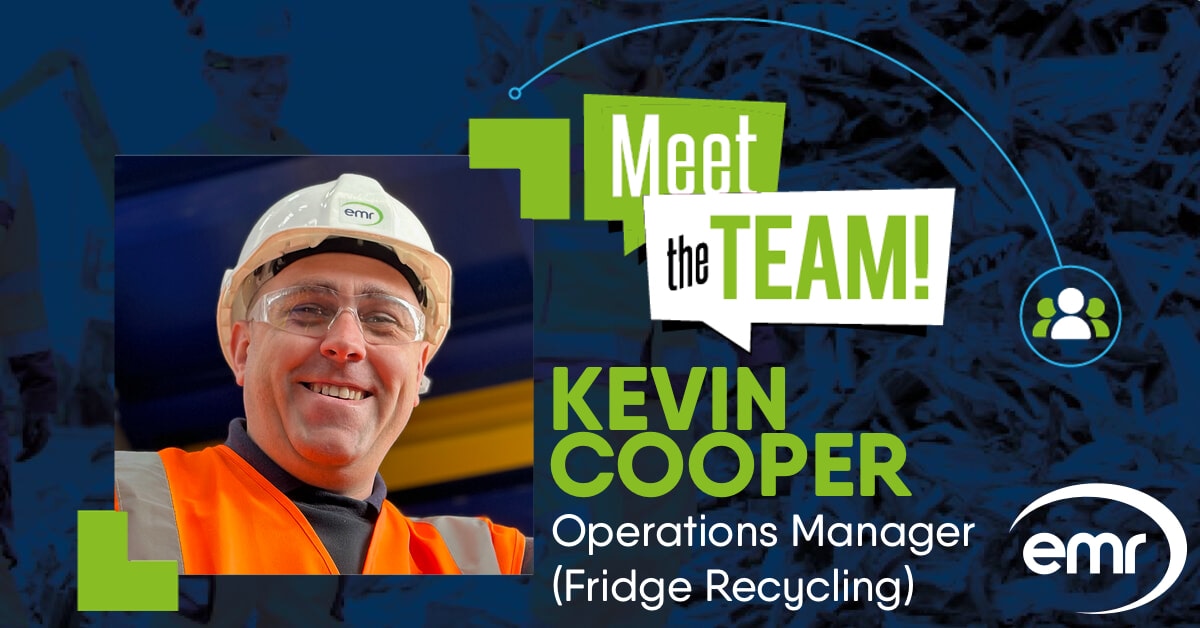CHOOSE
A DIFFERENT TERRITORY
“Our new plant features state-of-the-art technology and is a lot cleaner, lighter and has improved facilities – including a new canteen and quiet room,” says Kevin Cooper, Operations Manager at the new fridge recycling plant at EMR Darlaston.

After years of careful planning, Kevin says his team has found many reasons to celebrate working in this bigger, faster, and more advanced recycling facility.
“The working hours are a lot better for my team. Because it has a larger processing capacity of thousands of fridges per day, we’ve been able to optimise our shift patters – whilst there’s always staff to unload any deliveries.”
The arrival of this new site is the biggest change to Kevin’s working life since he arrived at EMR Darlaston - and began recycling fridges - almost two decades ago. In the years since, he has taken on a range of roles including joining, and eventually leading, the maintenance team.
“Understanding that side of the business is really useful because it means you know how to make sure the plant keeps running. If I was doing an operations role and I didn’t know how the plant worked at that level, it would be much more difficult.”
With the brand-new site operational, however, Kevin and his team can switch their focus, from simply keeping an aging plant working reliably, to taking advantage of the potential of the state-of-the-art technology now at their fingertips.
Using a range of advanced processes, including robotics, EMR is able to recycle the steel, aluminium and plastics in every fridge that arrives on site, with much of the hard-to-recycle gas and foam then recovered and incinerated for energy production.
“I log all of the production data – the fridges that come in, the number of fridges we process, and all of the dead time during that process - to ensure that we increase our efficiency wherever possible,” he says.
Keeping track of what comes in and out of the new EMR Darlaston fridge plant is vital because there are significant risks that come with recycling these appliances: “We still have CFC units arriving on site, which are some of the oldest units that we see. These fridges are full of ozone depleting gases and need to be recycled separately. They are now identified using robotic technology and redirected to our London facility, EMR Willesden. The other fridges that we see contain pentane - a highly flammable gas, which we process here.”
Despite the investment in this new, state-of-the-art facility, Kevin says much of what makes EMR a global leader in fridge recycling is the team that the company has developed. So how has EMR done it? “We do a lot of training, keeping the team up to scratch on what they should be doing and why they should be doing it. A lot of the fridges that arrive on site are old, so they will come in with no gas or with bits missing – our team needs to have the knowledge, experience, and flexibility to handle whatever they face.”
This focus on training and development is yet another reason why, as far as Kevin is concerned, EMR’s fridge recycling plant is now an even more attractive place to work.
“I always tell the younger members of staff and the new starters that I've had this job for 19 years. And now we’ve got a new fridge plant, which should do us for another 20 years. So that’s a really safe and secure, job which they can rely on for the future,” he says.
Read about other people who make EMR a great place to work, learn about our culture and values, or see our latest vacancies.